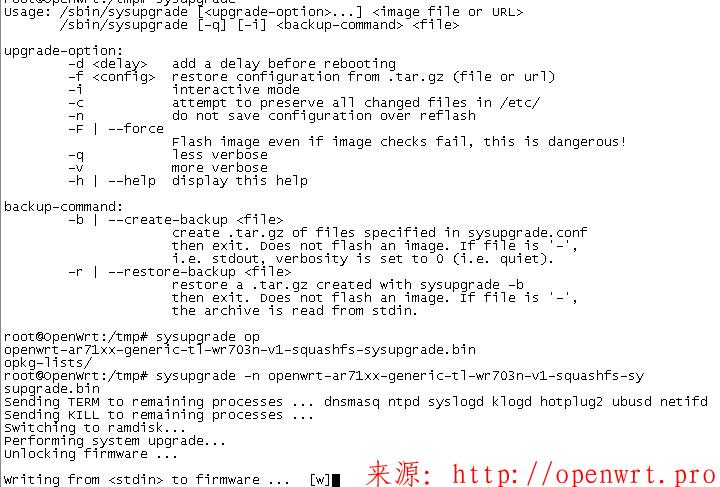一、iperf简介
iperf是一个基于Client/Server的网络性能测试工具,可以测试TCP、UDP和SCTP带宽质量,能够提供网络吞吐量信息,以及震动、丢包率,最大段和最大传输单元大小等统计信息,帮助我们测试网络性能,定位网络瓶颈。
iperf的好处是纯粹发包和接收,不会被硬盘、Flash等读写速度影响测试结果。
博主本人测试路由器的无线性能,iperf测试结果在一定程度上反应了路由器的网络性能。
二、演示
PC 与 路由器
路由器做服务端:
iperf3 -s -p 6800
PC做客户端:
iperf3 -c 192.168.10.1 -p 6800 -i 1 -t 30
三、iperf下载地址
1.官网
https://iperf.fr/iperf-download.php
2.windows 64位
https://iperf.fr/download/windows/iperf-3.1.3-win64.zip
3.windows 32位
https://iperf.fr/download/windows/iperf-3.1.3-win32.zip
4.ubuntu
sudo apt-get install iperf3
5.iperf源码
https://github.com/esnet/iperf
四、iperf的安装
1.windows
解压后将 iperf3.exe 和 cygwin1.dll 文件复制到 C:\Windows\System32路径,
以管理员身份运行cmd
输入iperf3 -v
有版本信息则表明安装成功
C:\Windows\system32>iperf3.exe -v iperf 3.1.3 CYGWIN_NT-10.0 ThinkPad-W530 2.5.1(0.297/5/3) 2016-04-21 22:14 x86_64 Optional features available: None
2.路由器
make menuconfig
Network —>
<*> iperf3…………………… Internet Protocol bandwidth measuring tool
生成的ipk路径:lede/bin/packages/mipsel_24kc/base
3.嵌入式设备
交叉编译
4.ubuntu
sudo apt-get install iperf3
五、iperf参数
root@OpenWrt:~# iperf3 -h Usage: iperf3 [-s|-c host] [options] iperf3 [-h|--help] [-v|--version] Server or Client: -p, --port # server port to listen on/connect to -f, --format [kmgtKMGT] format to report: Kbits, Mbits, Gbits, Tbits -i, --interval # seconds between periodic throughput reports -F, --file name xmit/recv the specified file -A, --affinity n/n,m set CPU affinity -B, --bind <host> bind to the interface associated with the address <host> -V, --verbose more detailed output -J, --json output in JSON format --logfile f send output to a log file --forceflush force flushing output at every interval -d, --debug emit debugging output -v, --version show version information and quit -h, --help show this message and quit Server specific: -s, --server run in server mode -D, --daemon run the server as a daemon -I, --pidfile file write PID file -1, --one-off handle one client connection then exit Client specific: -c, --client <host> run in client mode, connecting to <host> -u, --udp use UDP rather than TCP --connect-timeout # timeout for control connection setup (ms) -b, --bitrate #[KMG][/#] target bitrate in bits/sec (0 for unlimited) (default 1 Mbit/sec for UDP, unlimited for TCP) (optional slash and packet count for burst mode) --pacing-timer #[KMG] set the timing for pacing, in microseconds (default 1000) --fq-rate #[KMG] enable fair-queuing based socket pacing in bits/sec (Linux only) -t, --time # time in seconds to transmit for (default 10 secs) -n, --bytes #[KMG] number of bytes to transmit (instead of -t) -k, --blockcount #[KMG] number of blocks (packets) to transmit (instead of -t or -n) -l, --length #[KMG] length of buffer to read or write (default 128 KB for TCP, dynamic or 1460 for UDP) --cport <port> bind to a specific client port (TCP and UDP, default: ephemeral port) -P, --parallel # number of parallel client streams to run -R, --reverse run in reverse mode (server sends, client receives) -w, --window #[KMG] set window size / socket buffer size -C, --congestion <algo> set TCP congestion control algorithm (Linux and FreeBSD only) -M, --set-mss # set TCP/SCTP maximum segment size (MTU - 40 bytes) -N, --no-delay set TCP/SCTP no delay, disabling Nagle's Algorithm -4, --version4 only use IPv4 -6, --version6 only use IPv6 -S, --tos N set the IP type of service, 0-255. The usual prefixes for octal and hex can be used, i.e. 52, 064 and 0x34 all specify the same value. --dscp N or --dscp val set the IP dscp value, either 0-63 or symbolic. Numeric values can be specified in decimal, octal and hex (see --tos above). -L, --flowlabel N set the IPv6 flow label (only supported on Linux) -Z, --zerocopy use a 'zero copy' method of sending data -O, --omit N omit the first n seconds -T, --title str prefix every output line with this string --extra-data str data string to include in client and server JSON --get-server-output get results from server --udp-counters-64bit use 64-bit counters in UDP test packets --repeating-payload use repeating pattern in payload, instead of randomized payload (like in iperf2) [KMG] indicates options that support a K/M/G suffix for kilo-, mega-, or giga- iperf3 homepage at: https://software.es.net/iperf/ Report bugs to: https://github.com/esnet/iperf
常用参数
-s :服务端
-c :客户端 + 服务端的iP
-p :端口号
-i :时间间隔
-t :测试次数
转载自:https://www.maxlicheng.com/embedded/629.html








